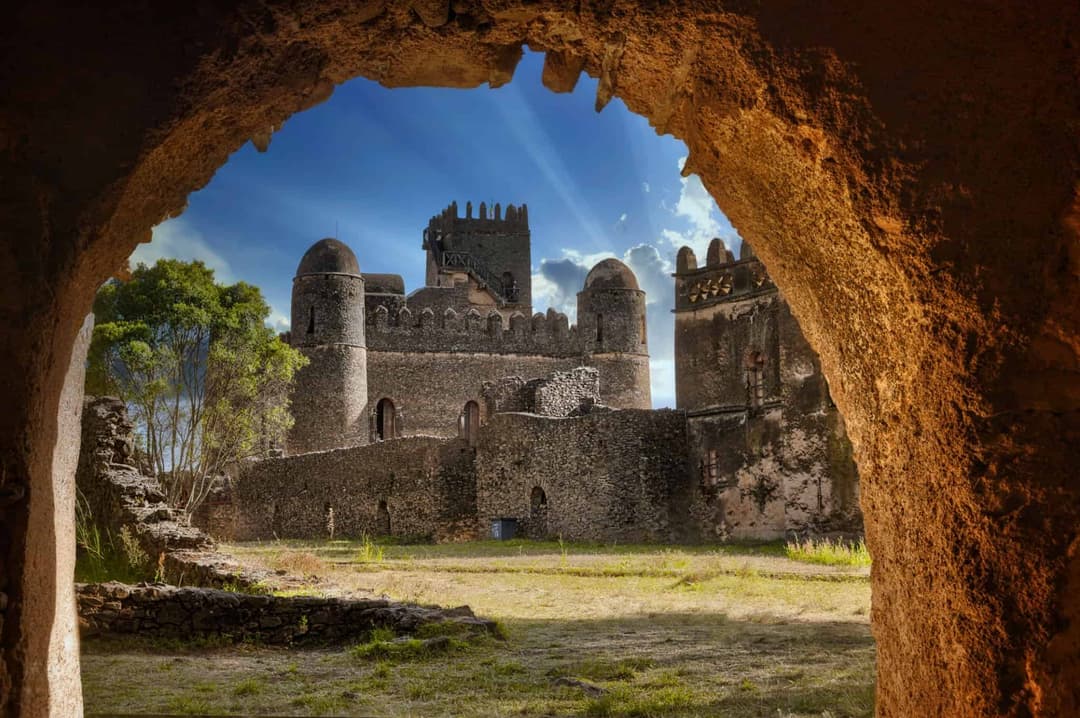Explore city parks teeming with birdlife, including the White-backed Black Tit, Abyssinian Slaty Flycatcher, and Brown-rumped Seedeater.
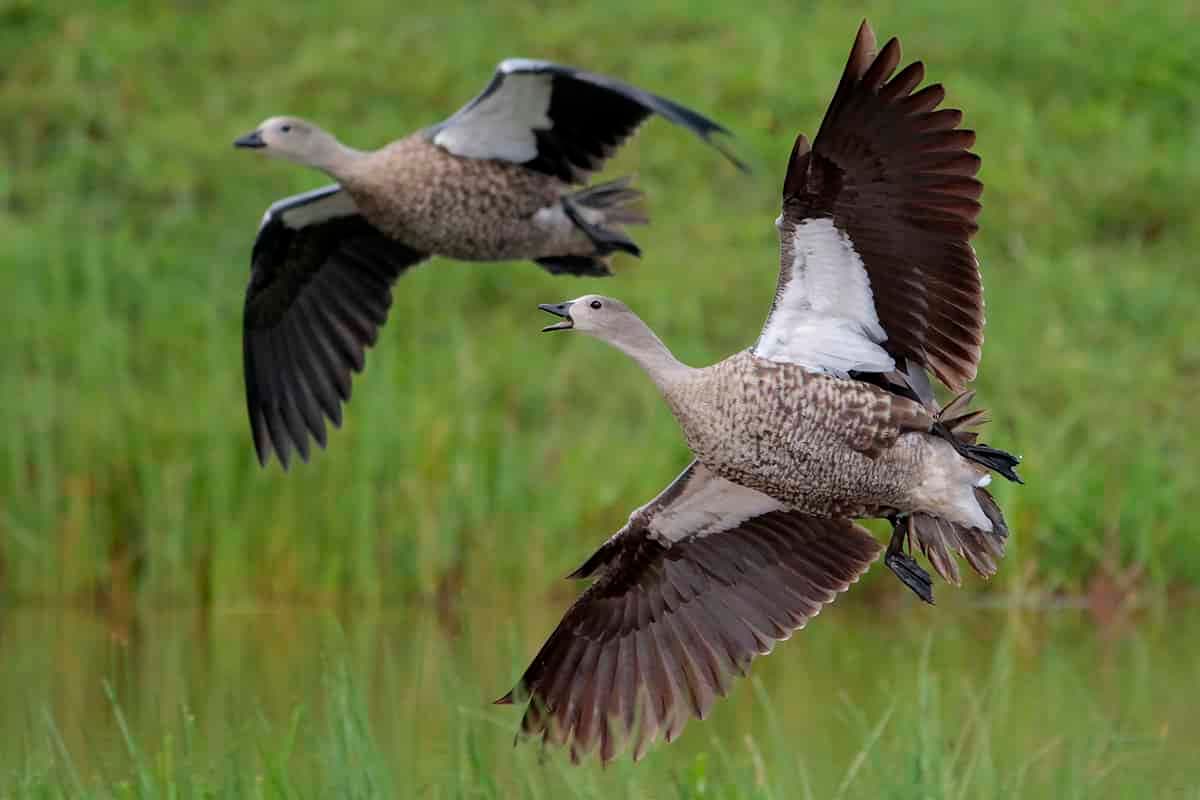
Introducing Exploring Ethiopia's Avian Splendor
A Birdwatching Odyssey
Embark on an extraordinary birdwatching odyssey through the diverse landscapes of Ethiopia, a country renowned for its rich birdlife and captivating endemic species. Over the course of 12 days, this immersive tour will take you on a thrilling adventure from bustling cities to remote wilderness areas, allowing you to witness the remarkable avian diversity that Ethiopia has to offer.
From the bustling capital of Addis Ababa to the majestic Bale Mountains and the hidden gems of Negele and Yabello, each destination holds unique highlights and opportunities to encounter rare and endemic bird species. Get ready to be enthralled by the stunning landscapes, vibrant birdlife, and the warm hospitality of Ethiopia.
Destination Highlights
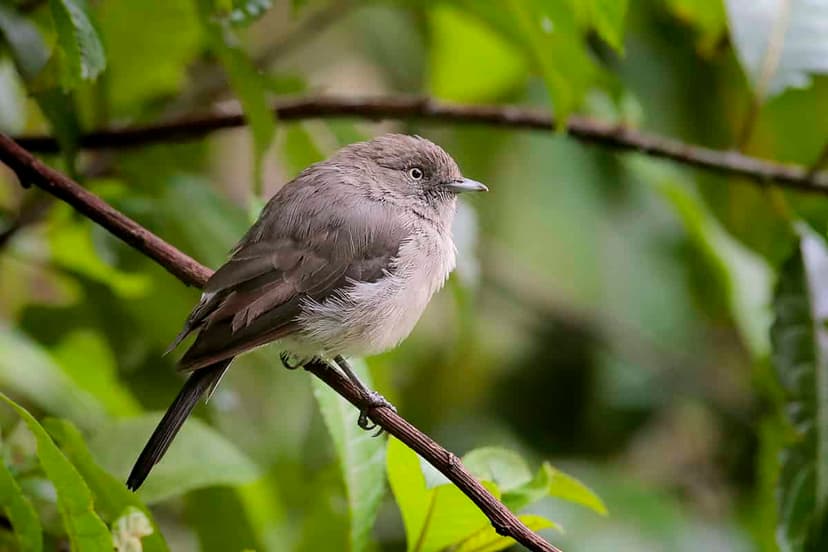
Highlighted Destinations
Search for the elusive Ankober Serin and encounter the unique Gelada Baboons in the wind-blown grand escarpment.
Discover a birding paradise with species like Abyssinian Catbird, Red-billed Pytilia, White-billed Starling, and Rüppell's Black Chat.
Witness the vibrant bird activity at the fish market and spot a variety of waterbirds, including the Black Crowned Crane and Pink-backed Pelican.
Journey through Afro-alpine moorland and encounter endemic species like Spot-breasted Lapwing, Abyssinian Woodpecker, and Ethiopian Siskin.
Explore the unique Liben Plains and search for the endangered Archer's Lark and other species like Red-naped Bushshrike and Somali Crombec.
Seek out the globally threatened Stresemann's Bushcrow and White-tailed Swallow in the Acacia savanna, along with other captivating birds like Vulturine Guineafowl and African Pygmy Falcon.
Marvel at Clapperton's Francolin, White-winged Cliff Chat, and Beautiful Sunbird in the woodland surroundings of Lake Langano.
Keep an eye out for fascinating mammals, including the Ethiopian or Simien Wolf, Mountain Nyala, and Gelada Baboons.
Immerse yourself in the rich traditions and warm hospitality of Ethiopia, connecting with local communities and savoring the country's diverse cuisine.
Itinerary at a Glance
Day by day Tour Itinerary
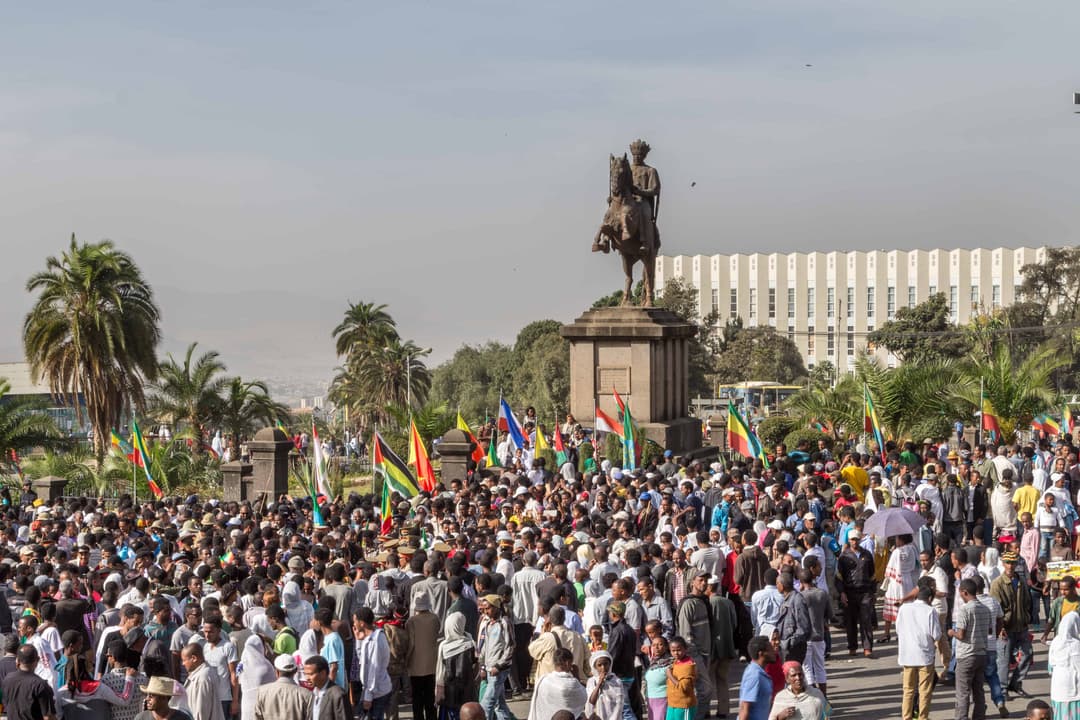
DAY 1: ARRIVAL IN ADDIS ABABA
- Today is essentially an arrival day. For those who arrive during the day, it is possible to enjoy some birding within city parks. Noteworthy species that may be seen this include White-backed Black Tit, Abyssinian Slaty Flycatcher, Brown-rumped Seedeater, Tekezze Sunbird, White-collared Pigeon, Wattled Ibis, and a host of raptors overhead, numbering both Egyptian and Hooded Vultures.
- Overnight in Addis Ababa.

DAY 2: ADDIS ABABA TO DEBRE BIRHAN VIA GEMASA GEDEL
- You will leave Addis Ababa early and head north to Debre Birhan, hopefully avoiding the capital's frenetic morning traffic. Our target species for the excursion to Gemasa Gedel are the localised Ankober Serin, a rare and elusive Ethiopian endemic.
- Discovered only in 1976, they survive along a few kilometres of this wind blasted grand escarpment, as do Gelada Baboons, also known as Lion-headed Baboons. This densely-pelted, shaggy baboon is endemic to Ethiopia, and the males can often be seen flipping back their lips in a show of dominance.
- These animals have the closest vocal repertoire to humans of any mammal, pronouncing all consonants and four vowels! They forage on the grasslands above the escarpment and roost on ledges of inaccessible cliffs at night.
- Other possible species to be found here include Ethiopian Siskin, Streaky Seedeater, Moorland Chat, White-billed Starling, Bearded Vulture, Verreaux's Eagle, Rufous-breasted Sparrowhawk, Peregrine Falcon, the seldom recorded Somali Starling and Long-billed Pipit. In the afternoon we will then retire to our comfortable hotel in Debre Birhan.
- Overnight in Debre Birhan.

DAY 3: DEBRE BIRHAN TO ADDIS ABABA VIA THE JEMMA VALLEY
- An early departure from Debre Birhan is essential in order to be at our chosen site when the endemic Harwood's Francolin is at its most vocal, thus providing our best opportunity for seeing this elusive species.
- The Jemma River is one of the main tributaries of the Blue Nile and it cuts a 700m (2,300ft) deep gorge through the landscape. The habitat in the gorge is dominated by Acacia woodland, while the steep sides provide habitat for some excellent endemic birds. We will concentrate our search here for Rüppell's Vulture, Verreaux's Eagle, African Hawk-Eagle, Augur Buzzard (dark morph birds are commonly seen here), Lanner and Peregrine Falcons, Erckel's Francolin, Nyanza Swift, Hemprich's Hornbill, Red-rumped Swallow, Abyssinian Wheatear, the endemic and localised Rüppell's Black Chat, endemic White-winged Cliff Chat and its more familiar cousin, Mocking Cliff Chat, endemic White-billed Starling, elusive Yellow-rumped Seedeater and Cinnamon-breasted Bunting.
- We will have a picnic lunch at the river and bird the surrounding woodlands for Blue-spotted Wood Dove, Klaas's Cuckoo, Black-billed Barbet, Eastern Olivaceous Warbler, Lesser Whitethroat, Foxy and Singing Cisticolas, African Paradise Flycatcher, Masked, Woodchat and Isabelline Shrikes, Swainson's Sparrow, Bush Petronia, Speckle-fronted Weaver, Red-collared Widowbird, Black-winged Red and Yellow Bishops, and both Crimson-rumped and Abyssinian Waxbills.
- With a good dose of luck, we may stumble upon the quiet and inconspicuous Red-billed Pytilia, one of the trickier endemics that is regularly found in the Jemma Valley. In the mid-afternoon, you will depart for the drive back to Addis Ababa, where we will spend the night.
- Overnight in Addis Ababa.

DAY 4: ADDIS ABABA TO LAKE AWASSA
- Your Ethiopian adventure continues with an early departure from Addis Ababa this morning as we head into the Great Rift Valley. Our first birding stop is at Lake Chelekcheka, an excellent site for migrant ducks and waders. Regular species encountered here include Northern Pintail, Northern Shoveler, Garganey, Eurasian Teal, Tufted Duck, Black-tailed Godwit and Temminck's Stint.
- Sorting through the rafts of ducks and other migrants can be very challenging due to the distraction caused by the sheer number of species moving through the scrubby vegetation near the lake edge! Common Crane often roost in staggering numbers on the far side of the water, and we may see them flying off to forage in huge, noisy flocks.
- The well-wooded rim of the deep Lake Hora will be our second stop. The woodlands around the lake also teem with birds and again it may prove difficult to keep up with the seemingly endless flow of lifers! Blue-breasted Bee-eater, Black-billed Barbet, Common Redstart, Eurasian Blackcap, Red-throated Wryneck, Dark-capped Yellow Warbler, Ruppell's Robin-Chat, Western Black-headed Batis, Beautiful Sunbird, Rüppell's Weaver and a diverse variety of waterbirds, especially deep water diving ducks, can be seen here.
- Thereafter, we make a short stop at the steep-sided Lake Bishoftu for Maccoa and Ferruginous Ducks, Southern Pochard, Singing Cisticola, gorgeous Tekezze Sunbird, Mocking Cliff Chat, Abyssinian Wheatear, Little Rock Thrush and flocks of Black-winged Lovebird! En route to Lake Awassa, we will also visit Koka Dam and Lake Ziway, all classified as Important Bird Areas supporting vast numbers of resident and migrant waterbirds.
- Species we will search for include the spectacular Black Crowned Crane, Pink-backed Pelican, African Darter, Yellow-billed Egret, Goliath Heron, Hamerkop, Yellow-billed and Saddle-billed Storks, Spur-winged and Egyptian Geese, Knob-billed Duck, the elegant African Pygmy Goose, African Fish Eagle, Western Marsh Harrier, African and Lesser Jacanas, Senegal Thick-knee, Sedge Warbler, Spur-winged Lapwing, Gull-billed Tern and Pied and Malachite Kingfishers.
- Strolling along the lakeshore at Lake Ziway will allow us excellent views of confiding Great White Pelican and the huge Marabou Stork while dazzling Northern Carmine Bee-eater, migratory White and Western Yellow Wagtails (including some of the striking feldeggi race) and the less colourful Ethiopian Cisticola can be seen around the lake edge. This promises to be an action-packed day, after which we will check into our hotel on the shores of Lake Awassa in the late afternoon.
- Overnight in Hawassa

DAY 5: LAKE AWASSA TO GOBA
- Our pre-breakfast birding stroll should yield some special birds around our well-wooded hotel grounds. Amongst our targets we hope to see are African Spotted Creeper, Little Weaver, Black-billed Wood Hoopoe, Double-toothed Barbet, Woodland Kingfisher, huge Silvery-cheeked Hornbill, the attractive Red-shouldered Cuckooshrike, Western Black-headed Batis, Brown-throated Wattle-eye, Mourning Collared Dove, Grey-backed Fiscal, Northern Puffback, and Bronze Mannikin.
- Reedbeds in the vicinity support Greater Painted-snipe, Black Crake, African Swamphen, Blue-headed Coucal, Red-faced Cisticola, Lesser Swamp Warbler, and Common Waxbill. The hotel grounds also support families of Grivet Monkey, though it is the regal Guereza (Black-and-white Colobus) that will certainly steal our attention as they leap through the trees, their shaggy pelts and long tails trailing behind.
- After breakfast, we may then visit the remarkable Lake Awassa fish market. This large lake is particularly rich in fish, and the fishermen gut their catch and discard the waste around the market.
- This, in turn, attracts large numbers of grotesque Marabou Stork and other birds. Photographic opportunities are unrivalled. We should also see Great White Pelican, White-breasted and Reed Cormorants, Hamerkop, African Sacred Ibis, Black-headed, Grey-hooded, and Lesser Black-backed Gulls, and sometimes the massively-equipped Thick-billed Raven squabbling over the fish remains.
- Leaving Lake Awassa, we wind our way upwards towards the world-famous Bale Mountains National Park. Rugged hillsides en route may hold a few surprises for us, and some dedicated searching may produce the mackinderi race of Cape Eagle-Owl, while wetter areas hold Rouget's Rail, Groundscraper Thrush (of the distinctive, endemic simensis subspecies), Blue-winged Goose, and smart Spot-breasted Lapwing.
- At the park headquarters in Dinsho, we will search the trails for the colourful Chestnut-naped Francolin, secretive Abyssinian Ground Thrush, vocal Abyssinian Catbird, and endemic White-backed Black Tit.
- With a healthy dose of luck, we may find roosting African Wood Owl and the highly sought-after Abyssinian Owl in the dark recesses of a Juniper thicket. We also hope to see a variety of mammals, including Mountain Nyala (now entirely restricted to the Bale Mountain massif), ‘Menelik's' Bushbuck, Bohor Reedbuck, and Common Warthog, unusual at this high altitude.
- Overnight in Goba.

DAY 6: BALE MOUNTAIN NATIONAL PARK
- This will be a day of great contrasts and amazing scenery and birding. You will depart early and ascend the Bale Mountain massif onto the Sanette Plateau, which lies between 3,800m and 4,377m (12,540 and 14,444ft) above sea level.
- As you climb out of Goba, we enter a Juniper forest zone, where we will search for African Goshawk, Rufous-breasted Sparrow hawk, White-cheeked Turaco, the localised Abyssinian Woodpecker, Cinnamon Bracken Warbler, African Hill Babbler, Montane White-eye, and Yellow-bellied Waxbill.
- Upon reaching this unique plateau, you will be driving on Africa's highest road - passing close to the summit of Ethiopia's second-highest mountain. This habitat is termed “Afro-alpine moorland” and is characterised by Jibrra or Giant Lobelias that tower like monolithic giants over the rich tussock grasslands and extensive cushions of yellow Everlasting flowers.
- This site is an Important Bird Area of immense significance, supporting seven globally threatened species and nearly all of Ethiopia's Highland biome species. The plateau holds the only Afrotropical breeding populations of Ruddy Shelduck, Golden Eagle, and Red-billed Chough.
- We will also search for Black Stork, Wattled Ibis, Chestnut-naped and Moorland Francolins, Rouget's Rail (particularly common and confiding here), endemic Blue-winged Goose, Spot-breasted Lapwing, Wattled Crane, Thekla's Lark, migratory flocks of Red-throated Pipit, Abyssinian Long claw, Red-breasted Wheatear, dumpy Moorland Chat, and vast flocks of endemic Ethiopian Siskins.
- These grasslands are estimated to support an incredible biomass of 4,000kg (8,800lb) of rodents per hectare. This obviously attracts an array of raptors and we should see Steppe and Golden Eagles, Augur Buzzard, and elegant Pallid Harrier courting over this green sea. They share this abundant food source with the plateau's most celebrated resident, the Ethiopian or Simien Wolf, crowned with the unenviable title of “the world's rarest canid.”
- Watching these vibrantly coloured animals, most closely related to the European Timber Wolf, exhibiting their hunting prowess whilst pouncing on Giant Mole Rats (another endemic to the Sanette Plateau) is surely among Africa's greatest wildlife experiences. You should enjoy excellent photographic opportunities in this unique montane habitat.
- Finally, you will reach the escarpment of this elevated plateau and stare down through the clouds at the vast Harenna Forest below. Time permitting; you make visit the upper slopes of this forest this afternoon. This remarkable forest is the largest intact forest block in Ethiopia and the largest protected Afro-alpine forest on the continent.
- It still supports populations of Lion, and the only surviving forest-dwelling African Wild Dogs. Although unlikely that you will see either of these species, the descent through this breathtakingly beautiful, moss-draped forest is inspirational.
- Here you will search for the uncommon Mountain Buzzard, African Olive Pigeon, Lemon and Tambourine Doves, African Emerald Cuckoo, Abyssinian Woodpecker, Narina Trogon, Brown Parisoma (represented by a subspecies endemic to this National Park), Abyssinian Crimsonwing, African Citril, and Yellow-crowned Canary. Later in the day, you will head back to our hotel in Goba.
- Overnight in Goba.

DAY 7: GOBA TO NEGELE VIA THE BALE MOUNTAIN NATIONAL PARK
- Today we will depart early and once again ascend the Bale Mountain massif onto the Sanette Plateau. After crossing this fascinating area again, you drop into the Harenna Forest. As we lose altitude, we will exit the forest zone and enter progressively drier thorn savanna in this remote, southern sector of Ethiopia.
- Along the dusty drive, we can expect to start adding a number of new species to our burgeoning list including Red-and-yellow Barbet, Golden-breasted, Shelley's and Superb Starlings, Northern Red-billed and Eastern Yellow-billed Hornbills and Lilac-breasted Roller.
- Finally, you will reach a dry wadi on the Genale River, home to Ethiopia's most sought-after endemic, Ruspoli's Turaco.
- The bird is named after an Italian Prince, its hapless discoverer, who was killed by an elephant soon after collecting the type specimen in the 1890's. It took another 50 years before explorers saw the turaco again, and only in the 1970's was anything revealed about this bird.
- We will search fruiting fig trees along the wadi and, with the help of local farmers we should enjoy excellent views of this very unusual and beautiful turaco. You will arrive in Negele in the early evening and check into our basic hotel.
- Overnight in Negele

DAY 8: NEGELE AREA.
- East of Negele lies a unique open grassland, the Liben Plains, to which the little-known Archer's Lark is restricted. This species belongs to the unusual genus Heteromirafra, which also includes South Africa's Rudd's Lark, and is considered one of the most endangered birds on Earth.
- You will walk through these plains in search of this special bird, which we hope to watch performing its parachute display flight. We should also find small parties of hovering Lesser Kestrel, giant Kori Bustard (the world's heaviest flying bird), White-bellied Bustard, Temminck's Courser, Black-winged Lapwing, the range restricted Somali Short-toed Lark, Plain-backed Pipit and Pectoral-patch Cisticola. If you're very lucky, you may see coveys of Coqui Francolin or flush a migratory Corn Crake.
- Further east of Negele you will bird the increasingly dry woodland and thorn savanna towards the Somali border. This area supports a recently found population of the tricky endemic Salvadori's Seedeater, scarce Golden Pipit, elusive Red-naped Bushshrike, White-winged Black Tit, Pringle's Puffback, Three-streaked Tchagra, Foxy Lark, Somali Crombec, Taita Fiscal, Red-fronted Barbet, garish Golden-breasted Starling, attractive flocks of White-crowned Starlings, Somali Crow, African Silverbill, Shelley's Sparrow and Somali Bunting. Large troops of Olive Baboon may also be encountered here and you should see Guenther's Dik-dik and possibly Gerenuk. Overnight in Negele

DAY 9: NEGELE TO YABELLO
- Today's drive along another long and seldom-travelled road takes you near to the Kenya border and finally to the Yabello region, home to two of Ethiopia's most sought-after endemic birds, both listed as globally threatened: the enigmatic Stresemann's Bushcrow and glistening White-tailed Swallow.
- This area of Acacia savanna is characterised by giant red termite mounds (some towering 5m above the plains!) and both these birds seem to be associated in some way with these marvels of natural architecture. The social Bushcrow (or Zavattariornis) was only discovered in 1938 and its affinities have yet to be established with certainty.
- Although it appears starling-like, it is presumed to be most closely related to Crows. Several birding stops will break the journey, the most notable being a stop at the Dawa River in search of Juba Weaver, White-winged Collared Dove and Black-bellied Sunbird.
- Other noteworthy birds you may encounter en route to Yabello include Somali Courser, Magpie Starling, Black-throated and D'Arnaud's Barbets, Pygmy Batis, Acacia Tit, Dodson's Bulbul, Red-fronted Warbler, Purple Grenadier, Black-capped Social Weaver, Steel-blue Whydah and its host, Black-cheeked Waxbill.
- Overnight in Yabello

DAY 10: YABELLO AREA
- You have the whole day to bird the Yabello area and get better acquainted with Stresemann's Bushcrow and White-tailed Swallow. Other birds you will be looking for are Gabar Goshawk, the shrike-sized African Pygmy Falcon, Yellow-necked Spurfowl, glamorous flocks of Vulturine Guineafowl, Black-faced Sandgrouse, Mottled Swift, Tree Pipit, the localised Bare-eyed Thrush, ventriloquial Spotted Palm Thrush, African Grey Flycatcher, Pale Prinia, Yellow-bellied Eremomela, Banded Parisoma, Hunter's and Shining Sunbirds, Superb and Wattled Starlings, Chestnut Sparrow, Yellow-spotted Petronia, Grey-capped Social Weaver, Chestnut Weaver, Green-winged Pytilia, White-bellied Canary and White-winged Widowbird.
- A night drive in this exciting area could produce Donaldson-Smith's and Slender-tailed Nightjars, Greyish Eagle-Owl, Northern White-faced Owl and Three-banded Courser. Nocturnal mammal sightings have included Striped and Spotted Hyenas, Serval, African Wild Cat and Ethiopian Genet.
- Overnight in Yabello

DAY 11: YABELLO TO LAKE LANGANO
- After breakfast, you will depart Yabello and make your way back north towards Addis Ababa on what is, essentially, a travel day. In the late afternoon, you will reach your comfortable hotel on the shores of Lake Langano. Overnight in Langano
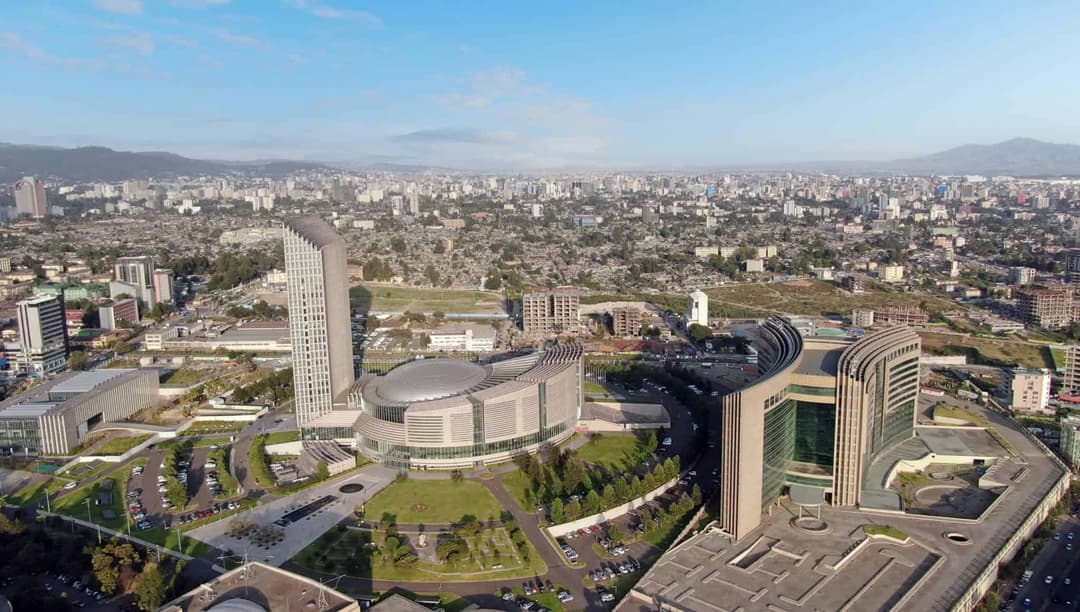
DAY 12: LAKE LANGANO TO ADDIS ABABA AND DEPART
- Following an early breakfast, you will try and spend time today exploring the surrounding woodlands of Lake Langano for Clapperton's Francolin, White-winged Cliff Chat, Little Rock Thrush, Buff-bellied Warbler, Beautiful Sunbird, Ruppell's Starling, White-faced Go-away-bird, Black-winged Lovebird, Abyssinian Wheatear, White-winged Black Tit, Black-billed Wood Hoopoe, Von der Decken's Hornbill, Ruppell's Weaver, Banded and Black-billed Barbets, Grey-headed Batis, African Pygmy Kingfisher, Bearded Woodpecker and Masked Shrike. After a final successful morning's birding, you will spend the balance of the day driving northwards, reaching the capital in the late afternoon. You will enjoy a final celebratory dinner before wrapping up the tour.
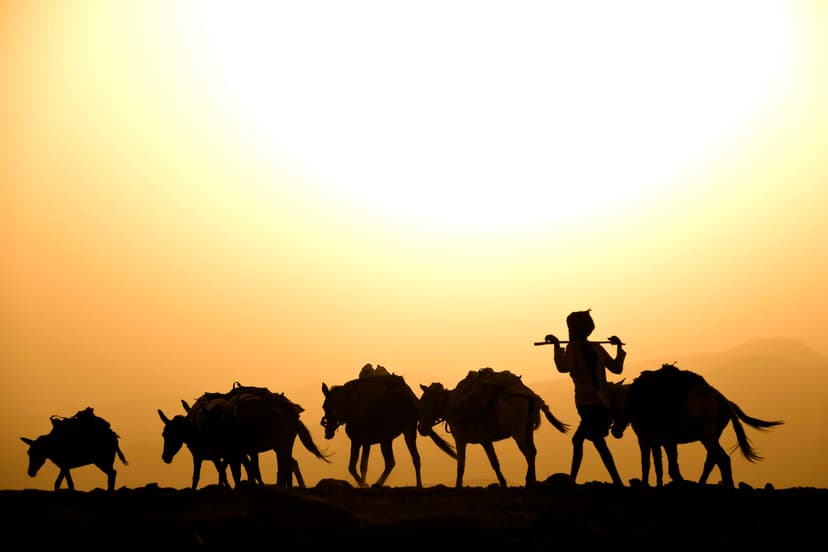
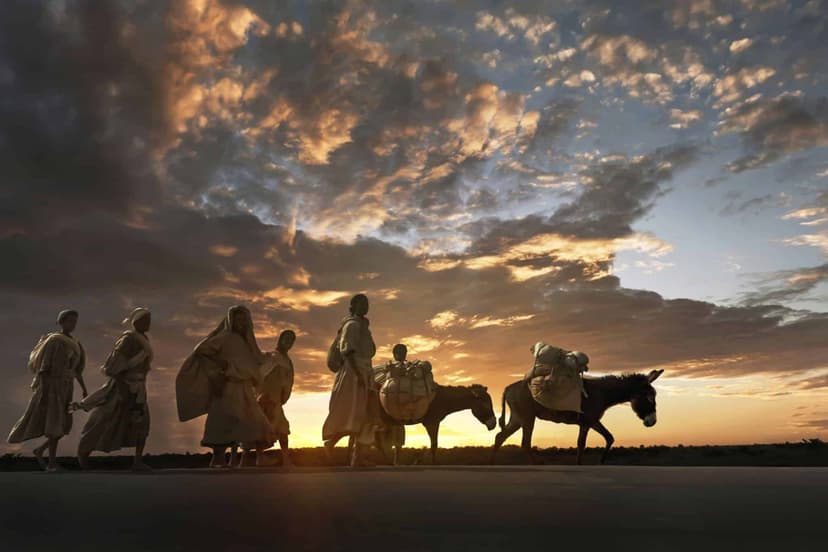
How Can We Help You Create an Extraordinary Ethiopian Adventure?
At Sawla Tours, we are passionate about turning your travel dreams into reality. With years of hands-on experience in crafting unforgettable journeys to Ethiopia, we are your go-to experts in deciding when to travel, where to explore, and what to discover.
Whether you have a detailed itinerary in mind, seek professional advice, or simply don't know where to begin, we're eager to assist. Reach out to us today, and together, we'll create an extraordinary travel experience tailored just for you.
Contact Us Now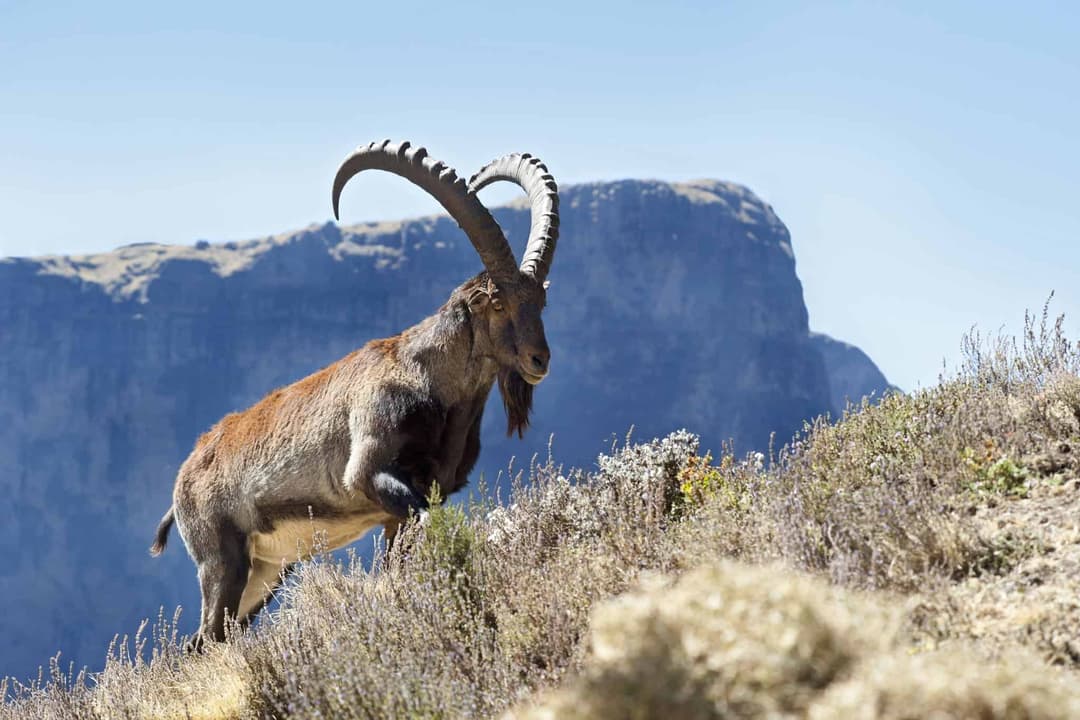
Ethiopia Tour Themes
Discover More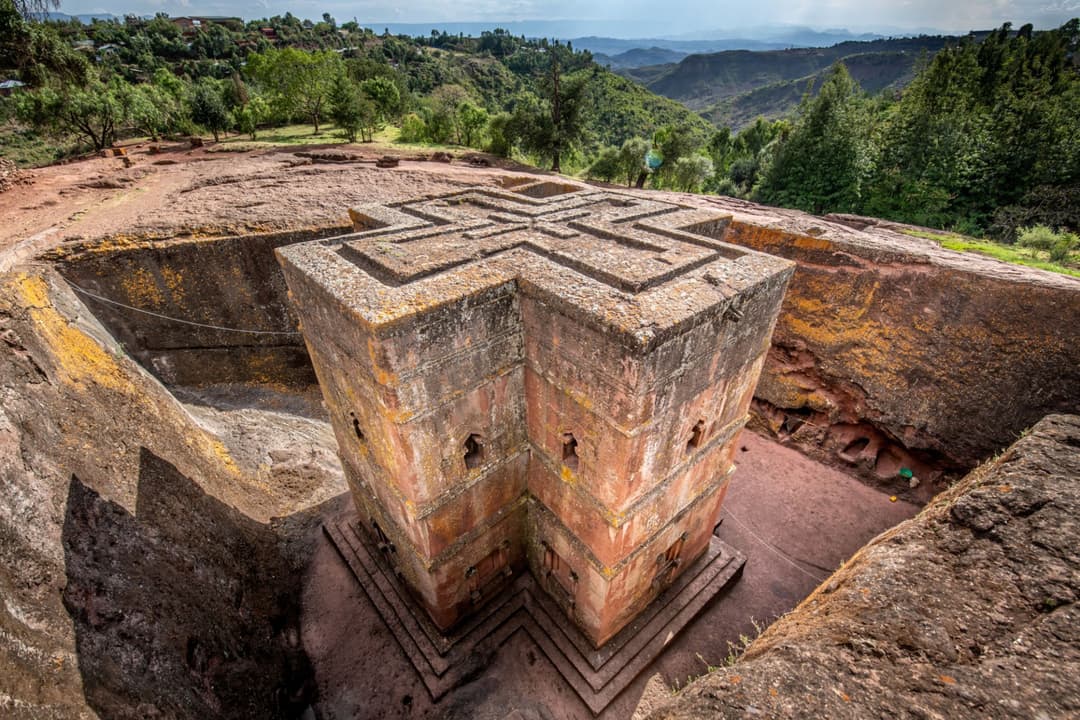
Popular Destinations
Discover More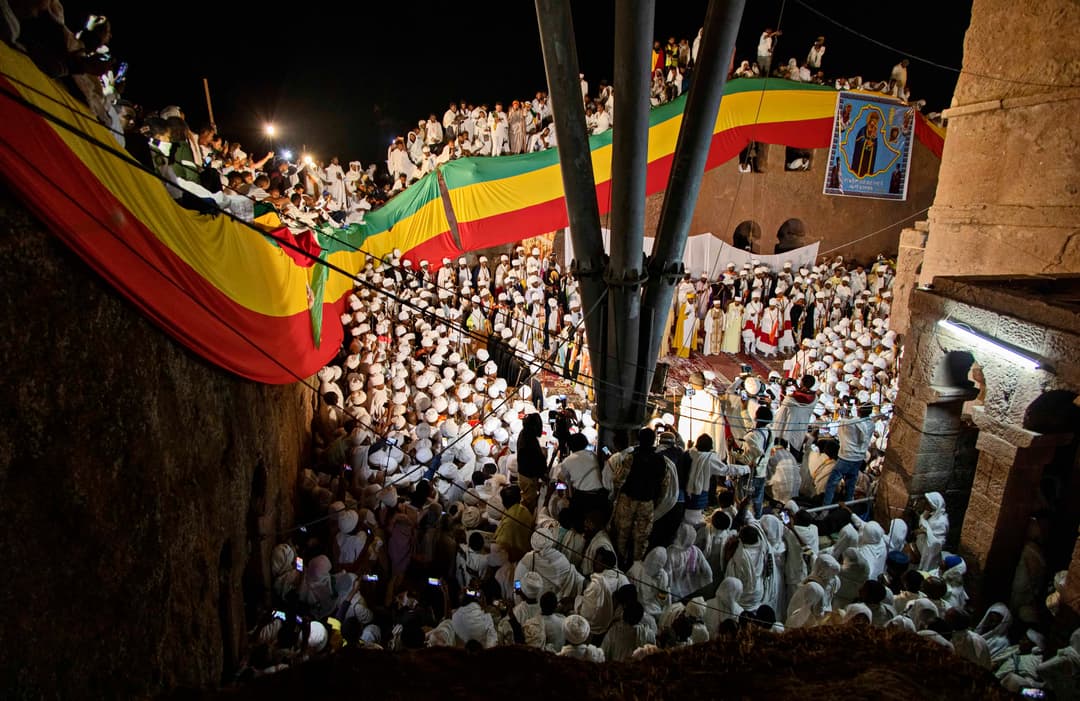
Itineraries By Experience
Discover More